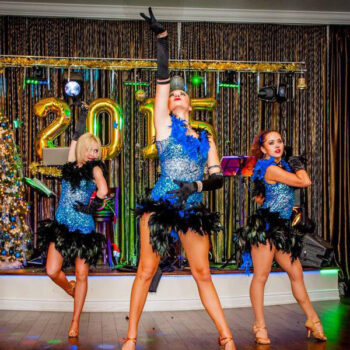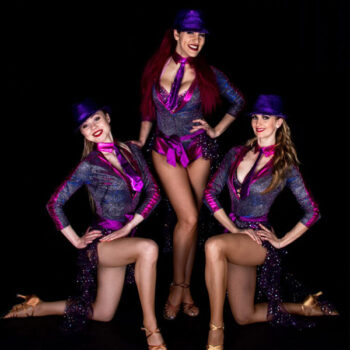Jazz dance is an electrifying and dynamic dance style that has its roots in the early 20th century. Renowned for its fusion of diverse dance styles, musicality, and the art of improvisation, jazz dance captivates audiences with its energy and creativity. In this comprehensive article, we will delve into the fundamental elements of jazz dance, trace its captivating history and origin, explore the various types of jazz dance, and uncover some of the iconic moves that make this style so enthralling. Join us on this exciting journey as we unravel the world of jazz dance.
What are the elements of jazz dance?
Jazz dance incorporates several key elements that contribute to its dynamic and expressive nature. These elements include syncopated rhythms, isolations, flexibility, and high-energy movements. Syncopation, which involves accenting off-beat rhythms, creates a sense of excitement and adds complexity to the dance. Isolations refer to the ability to move individual body parts while maintaining control and fluidity. Jazz dancers also emphasize flexibility to execute leaps, kicks, and turns with precision. Furthermore, the high-energy movements, such as jumps and quick footwork, contribute to the captivating nature of jazz dance.
History of jazz dance
Commercial jazz dance has a rich history that is deeply intertwined with the African American community and their cultural expressions. Jazz dance developed during the early 20th century in African American communities in the United States, particularly in New Orleans. Rooted in African and Caribbean dance traditions, jazz dance initially developed as a form of social and vernacular dance. It incorporated elements of African dances, European partner dances, and improvisation.
Jazz dance origin
The origin of jazz dance can be traced back to the African American experience, where it evolved as a response to social and cultural changes. It was heavily influenced by the pop music of the time, particularly jazz music, which was characterized by its syncopated rhythms and improvisational nature. As afro jazz music gained popularity, so did jazz dance, becoming a prominent part of the entertainment industry.
Are there different types of jazz dance?
Yes, there are various popular jazz dance styles, each distinguished by its unique movements, costumes, and characteristics. Let's explore the diverse range of jazz dance styles list and what sets them apart:
Jazz dance offers a plethora of styles, each with its distinct flair and aesthetic. From high-energy and syncopated movements to smooth and fluid sequences, jazz dance encompasses a wide spectrum of expressions. Dancers showcase their agility, strength, and versatility through a combination of kicks, turns, leaps, and intricate footwork.
One of the factors that set jazz dance styles apart is the choreography and movement vocabulary associated with each style. Costumes play a significant role in jazz dance, adding visual appeal and enhancing the overall performance. Different jazz dance styles may have specific costume requirements to match their respective themes and aesthetics.
What are the 3 styles of jazz dance?
The three main jazz dance styles names are Broadway Jazz, Street Jazz, and Contemporary Jazz. Each style has its distinct characteristics and influences, providing dancers with a diverse range of options to explore and showcase their talents.
Broadway Jazz
Broadway Jazz is a style of jazz dance that originated from the theatrical productions of Broadway dance center. It combines traditional jazz dance techniques with elements of theater and storytelling. Broadway Jazz often incorporates precise and synchronized movements, dynamic leaps, and expressive gestures. Dancers performing Broadway Jazz are known for their ability to convey emotions and portray characters through their movements. This style is popular in musical theater productions and is characterized by its energetic and show-stopping performances.
Street Jazz
Street Jazz, also known as urban jazz, is a contemporary fusion of jazz dance and hip-hop. It emerged from the streets and clubs, influenced by the urban street dance culture and the jazz music of the time. Street Jazz incorporates a blend of jazz techniques, lindy hop grooves, and freestyle movements. This style is characterized by its edgy and urban aesthetic, featuring sharp and isolating movements, intricate footwork, and a strong emphasis on individual expression and personal style. Street Jazz is often seen in music videos, commercials, and urban dance competitions.
Contemporary Jazz
Contemporary Jazz dance is a modern interpretation of jazz dance that incorporates elements of classical ballet, modern dance, and jazz technique. It emphasizes fluidity, versatility, and musicality. Contemporary Jazz allows for greater freedom of movement and encourages dancers to explore their unique style and interpretation. It often incorporates improvisation and encourages dancers to express emotions and tell stories through their movements. Contemporary Jazz is seen in contemporary dance companies, as well as in competitive and concert dance performances.
How to dance jazz style?
Some jazz dances examples include the energetic and rousing Charleston, the smooth and sultry movements of lyrical jazz, and the intricate footwork of the Fosse style. To dance jazz style, it is essential to develop a strong foundation in jazz technique and musicality. Professional jazz dancers should be familiar with the different types of jazz dance styles and their respective movements. Incorporating jazz walks, jazz funk squares, pirouettes, and kickball changes into routines can enhance the jazz dance experience.
Jazz dance moves
Jazz dance moves encompass a wide range of techniques and steps that showcase the energy and style of the dance form. Some popular jazz dance moves include jazz walks, where dancers execute smooth and stylized walking movements with a slight bounce. Jazz squares involve crossing one foot over the other, stepping back, and then crossing the other foot in front. Pirouettes are turning movements executed on one foot with the other leg extended, requiring balance, core strength, and spotting technique. Kickball changes are quick and lively movements that involve kicking one foot forward, stepping back onto the ball of the other foot, and then changing weight to the opposite foot.
Conclusion
In conclusion, jazz dance is a dynamic and captivating dance style that encompasses various elements, styles, and moves. It has a rich history rooted in African American culture and continues to evolve and thrive in the world of dance. With its syncopated rhythms, isolations, flexibility, and high-energy movements, jazz dance offers a unique and exhilarating experience for both dancers and audiences. Whether performing Broadway Jazz, Street Jazz, or Contemporary Jazz, dancers can explore the diverse range of dance styles and create powerful and expressive performances.




